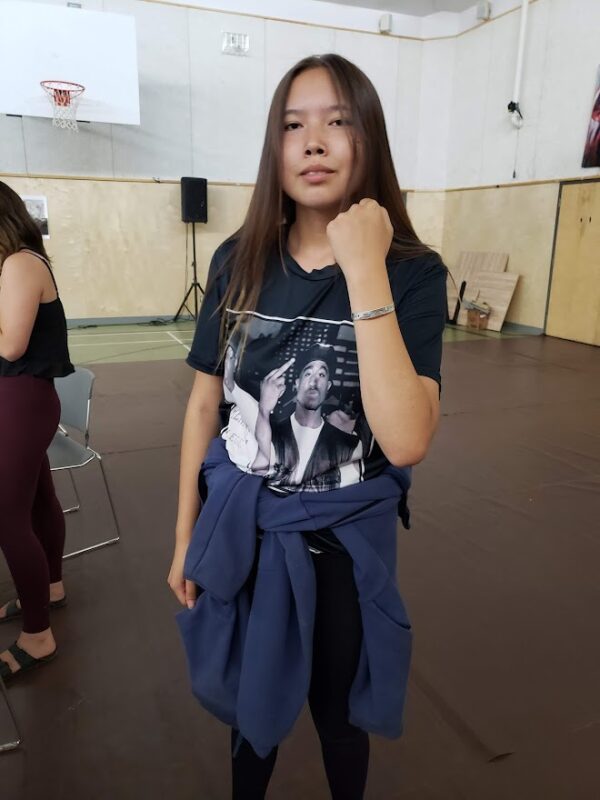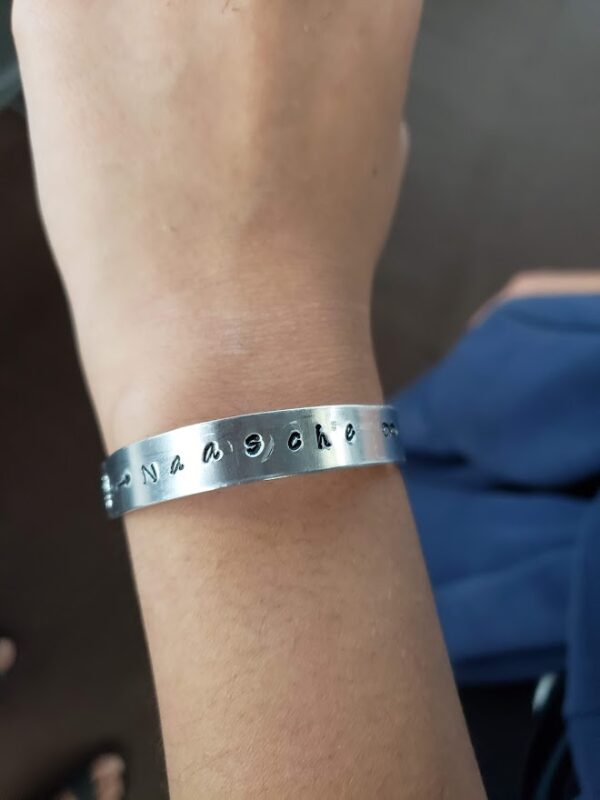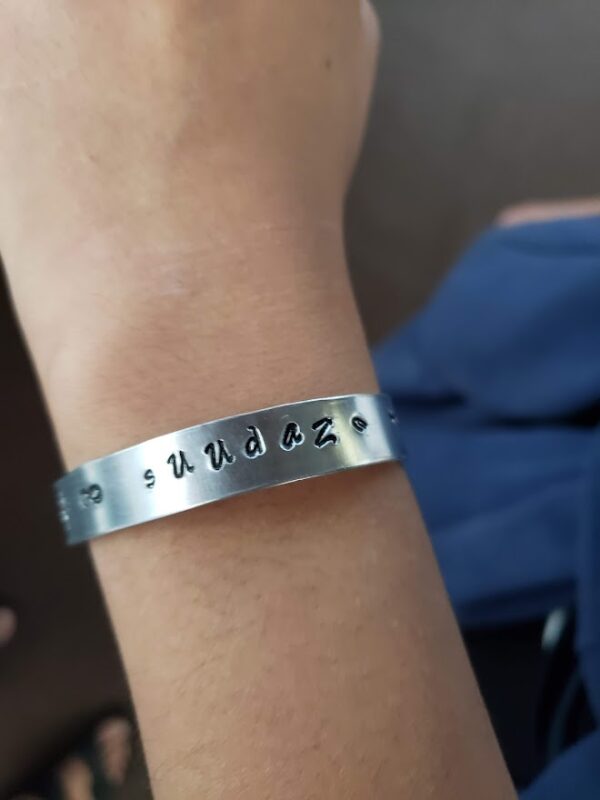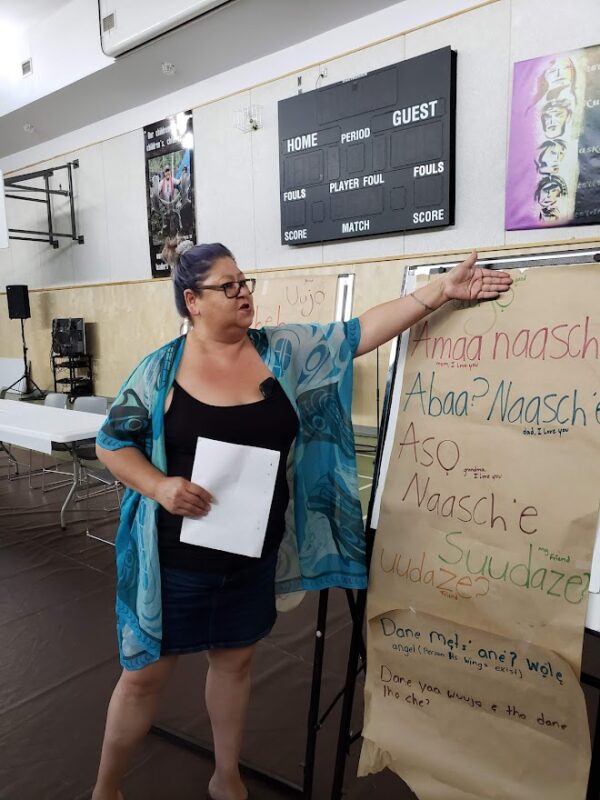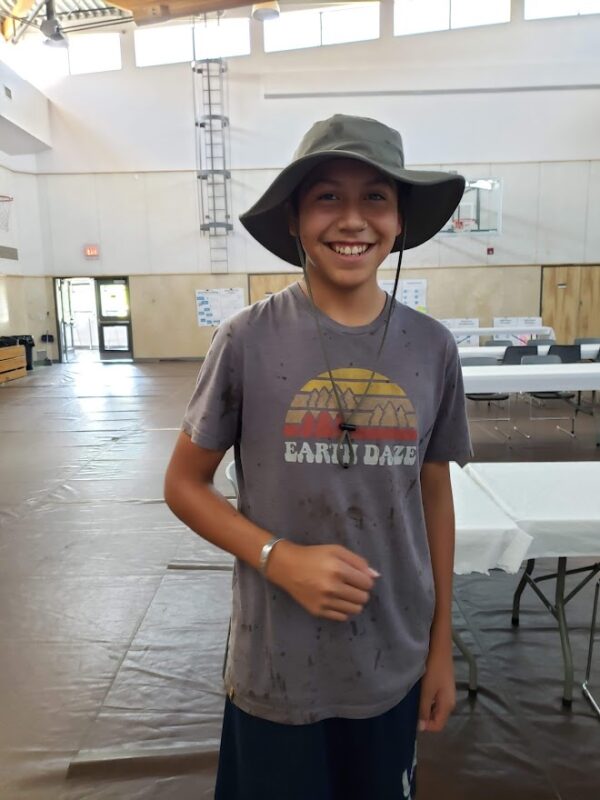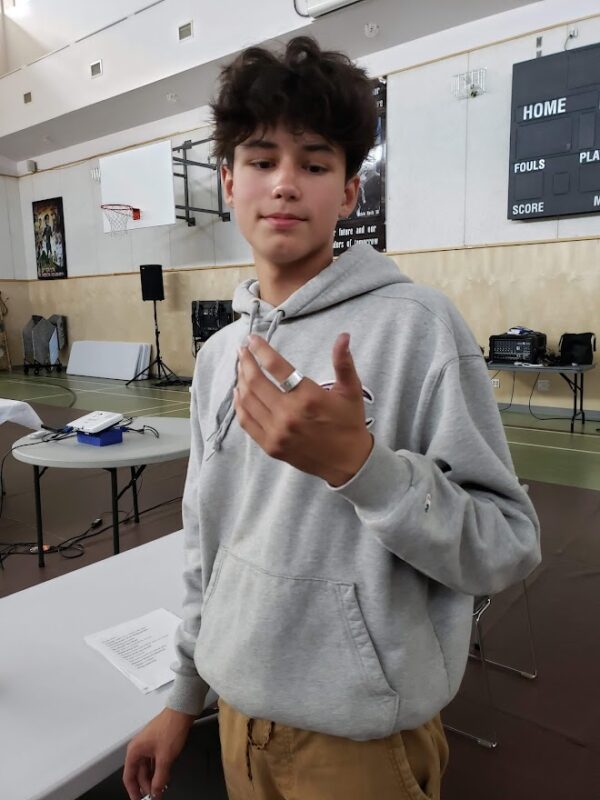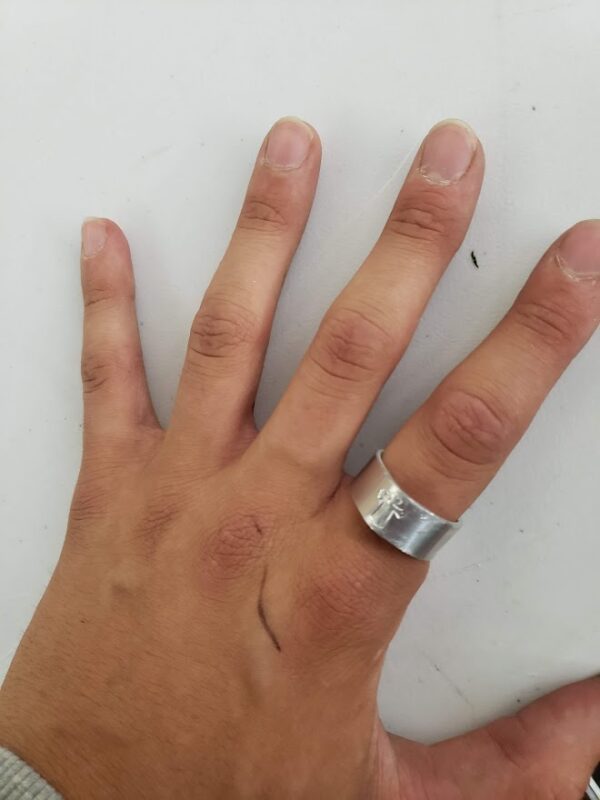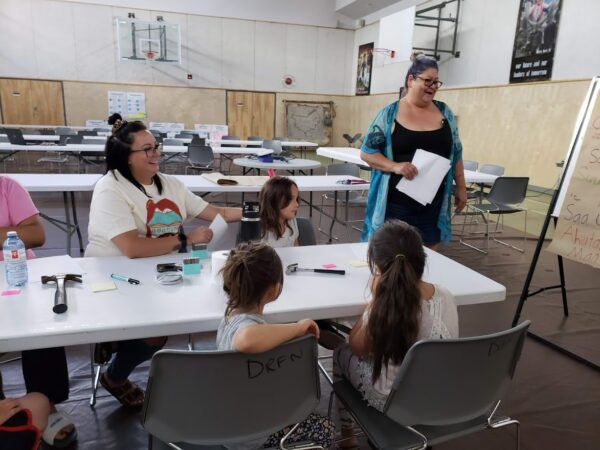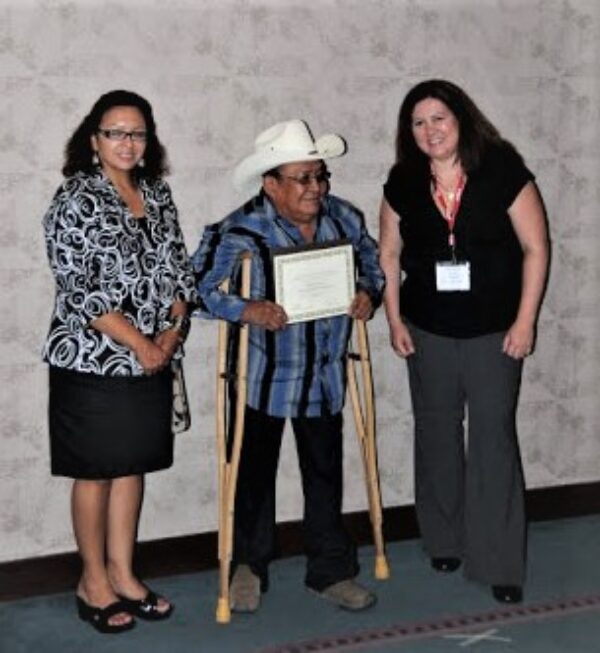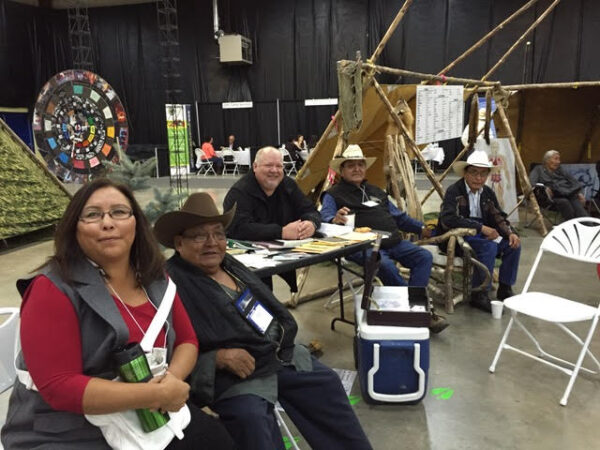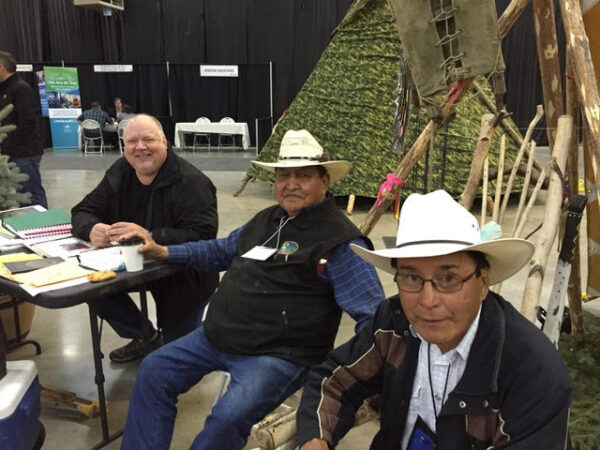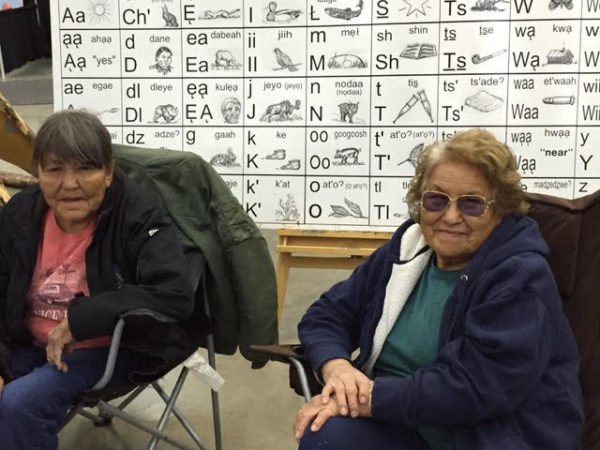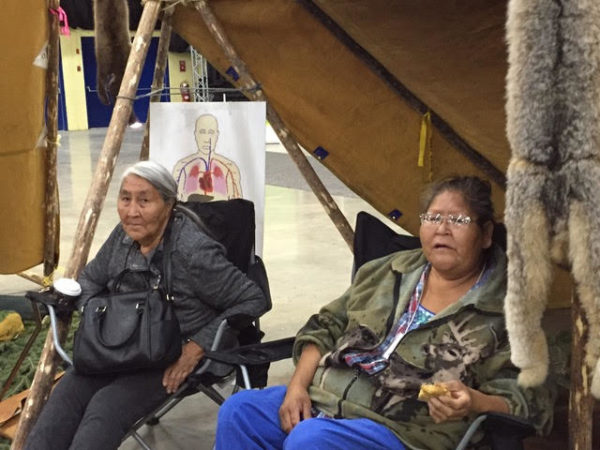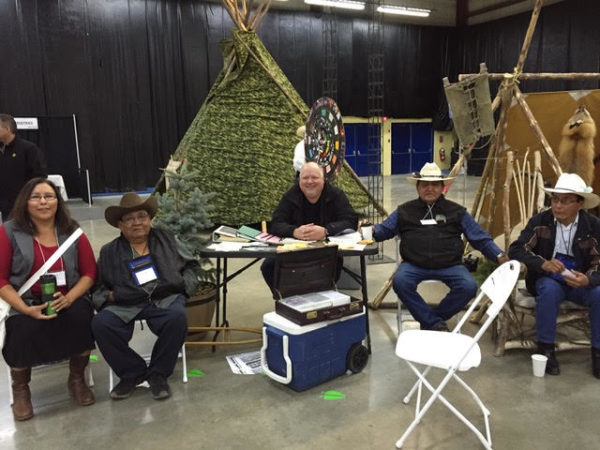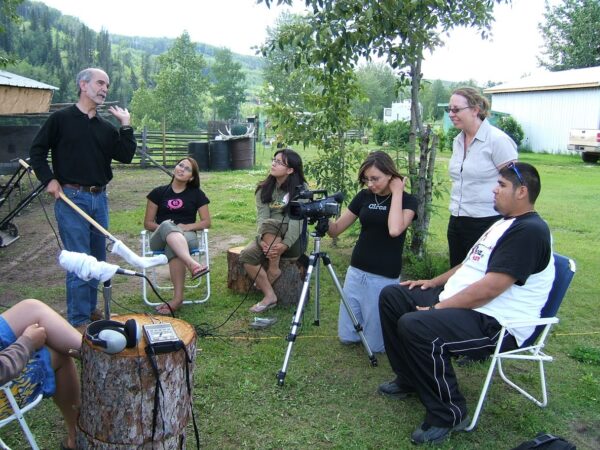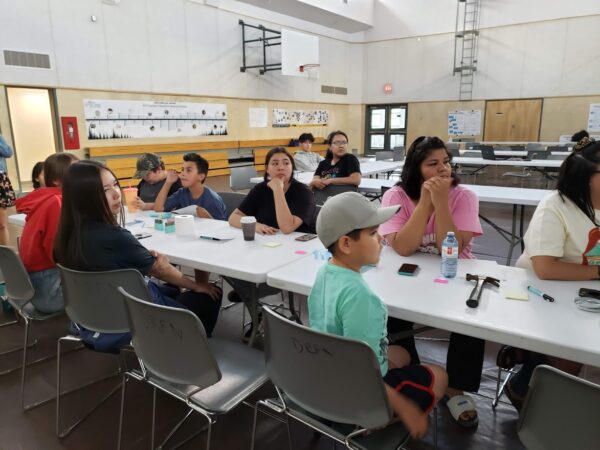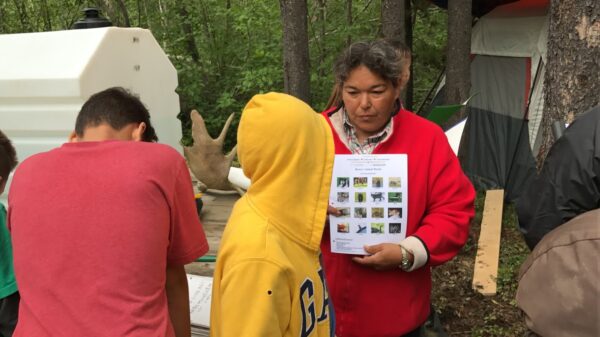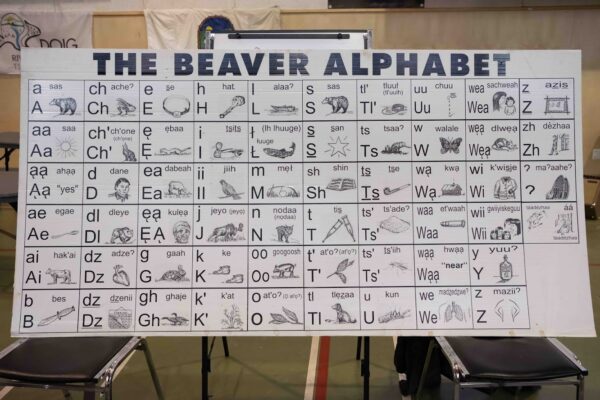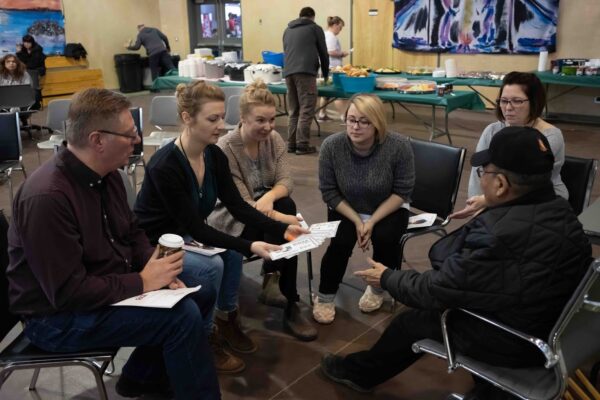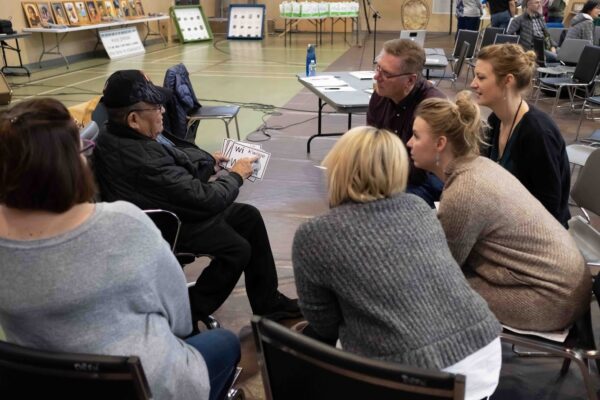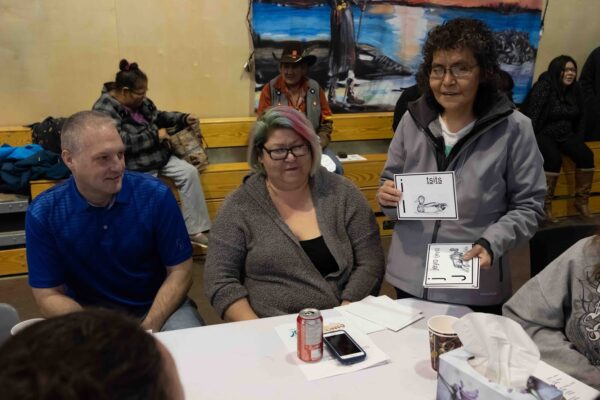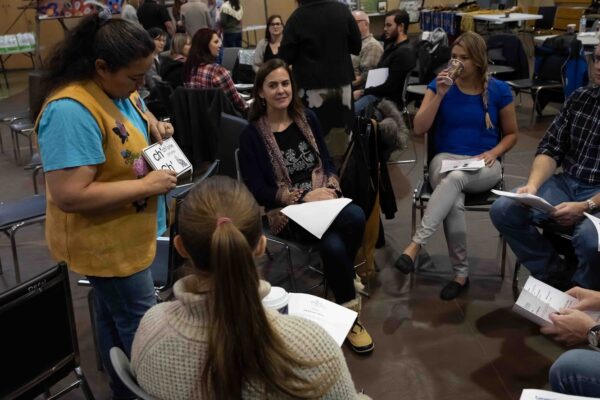This page of our website provides you with information about our language, the projects that have been undertaken to date to revitalize it as well as the people from both within and outside our community to have helped record and maintain it. If you’re interested in learning words in our language, you will find information and links to several of our learning resources at the bottom of this page. Through these resources, you can listen to people say words in Beaver and then try them yourself!
DRFN’s Latest Language Update
Amy Acko, DRFN’s Cultural Heritage and Language Liaison and Trail Acko, DRFN member, attended a language conference called COLANG 2002 in Missoula, Montana from June 13 – 24th, 2022. Following are some photos from the event as well as a write up from Amy detailing what she learned and how she will use this information for her work with her nation.
Our Language
We call our language Dane-zaa Záágéʔ, which translates as “people-regular language” in English. It is also known as the Beaver Language, because of the name the Europeans gave our people during the fur trade.
Dane-zaa Záágéʔ is a member of the Athabaskan language family, which is one of the largest in North America. It includes the Navajo language of the American Southwest, Hupa, spoken along the Pacific Coast of California and Oregon, and many languages of Alaska and Canada. Dane-zaa Záágéʔ is closely related to the languages spoken by our neighboring Athabaskan groups, such as Dene Dháh (Alberta Slavey), Sekani, Tsuut’ina (Sarcee), Dene Sųłiné (Chipewyan), and Dene Zā́gé’ (Kaska).
Dane-zaa Záágéʔ is spoken at Hanás̱ Saahgéʔ (Doig River), Blueberry, Halfway River, and Prophet River in British Columbia as well as at the Boyer River (Rocky Lane) and Child Lake (Eleske) Reserves in Alberta.
Many Doig members are still able to speak the traditional language; however, English is more commonly spoken in the community today.

2016 Census Data indicated that 39.1% of DRFN’s population learned the Dane-zaa Záágé language first, with 26.2% speaking it in their homes. In total 56.5% of DRFN’s on-reserve population speaks Dane-zaa Záágé (INAC, 2019).
Our Language Experts
Our language experts Billy Attachie and Madeline Oker continue to work with our community and linguists such as Dr. Patrick Moore to document our language and keep it alive.

DRFN member Billy Attachie has been working on documenting and translating Beaver language since the 1950s and 60’s. Billy is still actively involved in developing new words and works closely with the Cultural Heritage and Language Department at Doig River. For more information on Billy Attachie, please visit the Dane Wajich website here.

Madeline Oker works at DRFN in the Cultural Heritage and Language department, primarily focusing on language translation, documentation and the preparation of learning materials. Madeline is a proficient Beaver language speaker and has worked closely with Elder Billy Attachie for many years in language development. For more information on Madeline, please visit the Dane Wajich website here.
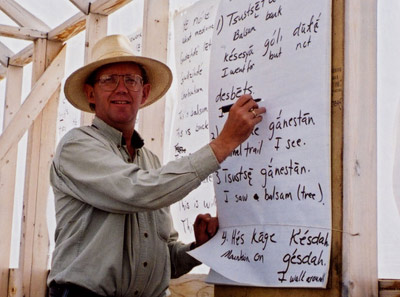
Dr. Patrick Moore has been working with Doig River for a number of years on language documentation and translation. He is a professor at the University of British Columbia. For more information on Dr. Moore, please visit the UBC website here.
Revitalizing Dane-zaa Záágéʔ
English is now the first language of most Dane-zaa children, and of many adults in our communities. Dane-zaa Záágéʔ was our primary language until our grandparents and parents started to send our children to school in the 1950s. English only became dominant in the 1980s. Because our language is orally based, Dane-zaa Záágéʔ becomes increasingly endangered as our fluent speakers pass away.
One thing lacking right now is, start slowly dying off, is our language.
But we are fighting that. We try to bring it back.
Gerry Attachie, 2005
DRFN has undertaken several initiatives to record, protect and teach Beaver language over the past few decades. They have been assisted by very committed individuals who, in some cases, spent years with the Doig people to learn and record their language. Today there is a team of Doig River First Nation members who are certified language instructors and continue to teach their members Beaver language.
Beaver Literacy Project
Between 1976 and 1994 Marshall and Jean Holdstock worked with fluent speakers of the Dane-zaa Záágé (Beaver) language to analyze the sound system of Dane-zaa Záágé and develop a writing system for it. With assistance from Wycliff Bible Translators and the Summer Institute of Linguistics, the Holdstock’s also produced a dictionary and several introductory language books.
An Introduction to Conversational Beaver
This project was first initiated in 1999. DRFN had a vison to ensure that the younger generations would have a way to access language materials on the computer. DRFN continued its work to produce the multimedia resource “An Introduction to Conversational Beaver”. This resource provides students with the ability to read and hear the Dane-zaa Záágé language simultaneously. These conversational programs continue today.
Dane Wajich Project
In 2005 DRFN continued its efforts to preserve their language through an online platform housed by the Virtual Museum of Canada. The community partnered with ethnographers, linguistics, and technical experts to develop an online exhibit called “Dane Wajich” Dane-zaa Stories and Songs: Dreamers and the Land. The Virtual Museum also hosted documentary footage of cultural sites and places within DRFN’s Territory. At these sites, Elders and members share their stories, including oral histories about the places, songs, people, language, and experiences of their past. The Virtual Museum platform with this information no longer exists, however it has been transferred to this website.
Documenting our Elders telling stories in Dane-zaa Záágéʔ for these use in these lessons is just one of the ways that we are working to preserve our language. Learning how to write it down is another way that we are preserving it.
Alphabetic and syllabic writing systems were developed for Dane-zaa Záágéʔ by early Anglican and Catholic missionaries in the 1800s, but the most systematic orthographic work has been conducted by Marshall and Jean Holdstock. Since 1962, they have worked with Billy Attachie, Sam Acko, and other speakers at Hanás̱ Saahgéʔ (Doig River) to analyze the sound system of our language and develop a writing system for it. With assistance from Wycliff Bible Translators and the Summer Institute of Linguistics, the Holdstocks conducted a Beaver Literacy Project between 1976 and 1994. They worked with our community and produced a Dictionary as well as a number of introductory books.
Current Language Initiatives
Language Planning
First Voices
Dane-zaa Záágéʔ Gallery
Learn Dane-zaa Záágéʔ
DRFN has extensive Dane-zaa Záágéʔ language learning resources. You can learn how to say a variety of common words through visual and audio materials including things such as animals, parts of the body, basic conversation and much more. Try out some of our learning materials through this page of our site.
Check out our Dane-zaa Záágéʔ pronunciation guide to learn the sounds used in our alphabet.
